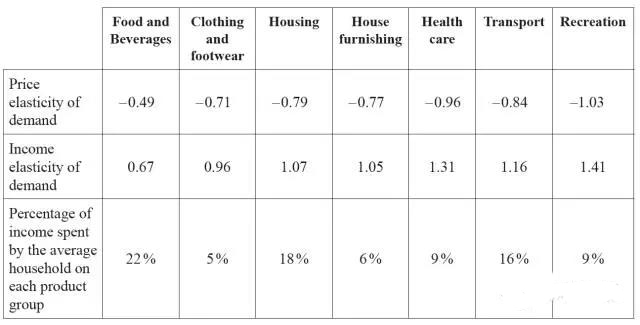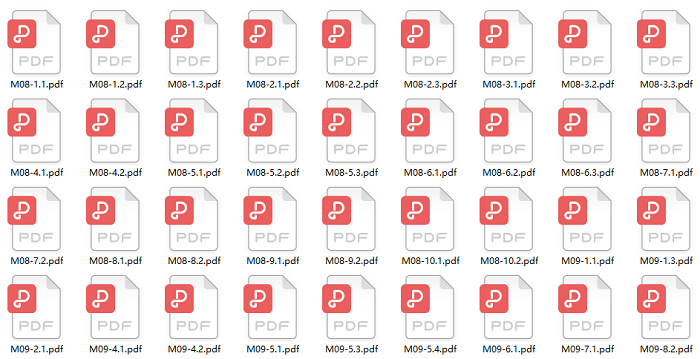
很多同学过完假期后就要开始IB经济的学习了,本文就从真题的角度切入带大家看看IB经济考试难吗,帮助学好这门“文理兼具”的社科课程。

经济学是一门“复合”国际课程,它包含了数学、历史、政治学、统计学等许多国际课程领域,涉及到的范围十分广泛。IB经济属于6个IB国际课程组中的个人与社会学 (Individuals and societies) 分类,课程分为标准难度课程(SL / Standard Level)和更具挑战性的高难度课程(HL / Higher Level)。IB经济课程总分为7分。
IB考试经济学的题型结构并不复杂,主要为选择题与简答题。选择题共三十道,每道四个选项。
简答题会给你几段短文,让你在阅读后回答以下的小题,其中常见的小题为:“Define the term ‘x’ indicated in bold in the text.”即给文中名词下定义,考查考生的记忆能力。
其他小题如:“Using information from the text/data and your knowledge of economics, evaluate the possible consequences for the Brazilian economy of the fall in the value of the Brazilian real.” 则偏向于利用经济学知识进行分析思考,考察考生的思维能力。
接下来让我们从具体的题目切入,感受下IB经济考试难吗。
【题目】
Answer two questions. Each question is worth [25 marks]. Write your answers in the boxes provided.
1. The table below shows data for price elasticity of demand and income elasticity of demand for seven product groups in Argentina in 2008.

There are concerns about rising food prices and their impact on households. Economists have forecast that rising food prices may have a negative effect on the demand for goods in other product groups.
(a) Outline one reason why
(i) the price elasticity of demand figures are negative;
(ii) the income elasticity of demand figures are positive.
(b) Using the price elasticity of demand data in the table
(i) calculate the percentage change in quantity demanded for clothing and footwear if the price of clothing and footwear rises by 6 %;
(ii) calculate the percentage change in the price of house furnishings that can lead to a 2 % fall in quantity demanded of house furnishings;
(iii) describe what might happen to the revenues of food and beverages firms as the price of food and beverages increases.
(c) The cross price elasticity between housing and house furnishing was estimated to be equal to – 0.4. Using this cross price elasticity data, explain the possible impact that an increase in house prices might have on the demand for house furnishing.
(d) Using the income elasticity of demand data in the table
(i) calculate the percentage change in quantity demanded for housing if household incomes rise by 4 %;
(ii) calculate the percentage change in household incomes that can lead to a 5 % rise in quantity demanded of recreation.
(e) Argentina’s average household disposable income is currently US$11 132 and household incomes are expected to grow in the future. The average Argentinean household income is forecast to rise by 27 % by 2015.
(i) Calculate the amount the average Argentinean household currently spends on health care.
(ii) Calculate the forecasted average Argentinean household income for 2015.
(iii) As a result of the forecasted average Argentinean household income for 2015,calculated in part (ii), explain what you would expect to happen to the proportion of income Argentinean households spend on health care.

【答案解析】
(a)
(i)As price increases, the quantity demanded decreases, and vice versa.So there is a negative relationship between price and quantity demanded sinceif price increases the willingness and ability to purchase the good decreases.
(ii)As income rises, households are more willing and able to purchasegoods. And because the goods in the table are normal goods, the quantitydemanded rises.
(b)
(i)-0.71 = % change in Qd / 6: % change in Qd = - 4.26 ( a decrease of4.26%)
(ii)-0.77 = -2 / % change in price: % change in price = 2.60 ( anincrease of 2.6%)
(iii)As the price of food and beverages increases the revenue of food andbeverages firms increases because demand is price inelastic so the increase inprice leads to a proportionately smaller decrease in quantity demanded.
(c) As the price of houses increases thedemand for house furnishings will decrease as they are complementary goods.Hence, as houses become more expensive, fewer will be bought and fewer housefurnishings will be needed. The increase in the price of houses will cause asmaller decrease in the demand for house furnishings.
(d)
(i)1.07 = % change in Qd / 4%: % change in Qd = 4.28 ( an increase of4.28%)
(ii)1.41 = 5 / % change in income: % change in income = 3.55 ( anincrease of 3.55%)
(e)
(i)0.09 x 11132 = $1,001.88
(ii)11132 x 1.27 = $ 14,137.64
(iii)The income elasticity of demand for health care is greater than 1,which means the demand for health care rises faster than income as incomerises; as a result, households will be spending a higher proportion of theirincome on health care over time.
看完这道大题解析,你感觉IB经济考试难吗?IB经济考纲在去年更新了一次 ,从明年5月考试开始生效,考试的方式也是有变动和知识点都有很大变动,如果不知道该怎么调整复习策略,可以点击预约试听【唯寻IB同步培训班】——
提供IB科目与IA、EE、TOK专项论文辅导,
国际课程辅导团队+助教+个人顾问多对一模式,
细致拆解考纲,
配套题目进行讲解及练习,
为每个学员出具模考诊断报告
不断打磨考试状态



现在报名还能领取唯寻教学天团线上1V1测评,私人定制学习方案哟。
看完IB经济考试难吗,你还可以看↓
IB经济IA怎么写?新闻评论的选题、结构、画图要求全攻略快收好
【文末福利】
扫码添加小唯,
转发本文至朋友圈,
集齐10个赞,
她就会给你发50篇TOK范文大礼包


↑ 小唯 你的专属留学顾问 ↑

学习有方法,成长看得见
筑梦牛剑/G5/常春藤
